
Listen to this blog
The quality of a business’s customers determines everything from its valuation to its longevity. CMOs and marketing experts can’t stress this enough. In recent times, we have started seeing a shift from standard revenue metrics to customer-centric metrics to evaluate companies. Customer metrics can be broken down into three broad categories: acquisition, retention, and quality (which is AOV for a customer along with several average customer orders or average customer revenue).
The general rule of thumb says, retaining a customer is always more beneficial than acquiring a customer. There are a lot of reasons why this rule isn’t challenged. Some are cited here. In this blog, we aim to put these claims to test and see if they hold for a high-value, low-volume company.
Customer data from a leading retailer has been used to conduct our experiments.
Experiment – Two Types of Customer Growth
We start by looking at customer growth and break it down into repeat and non-repeating customers.
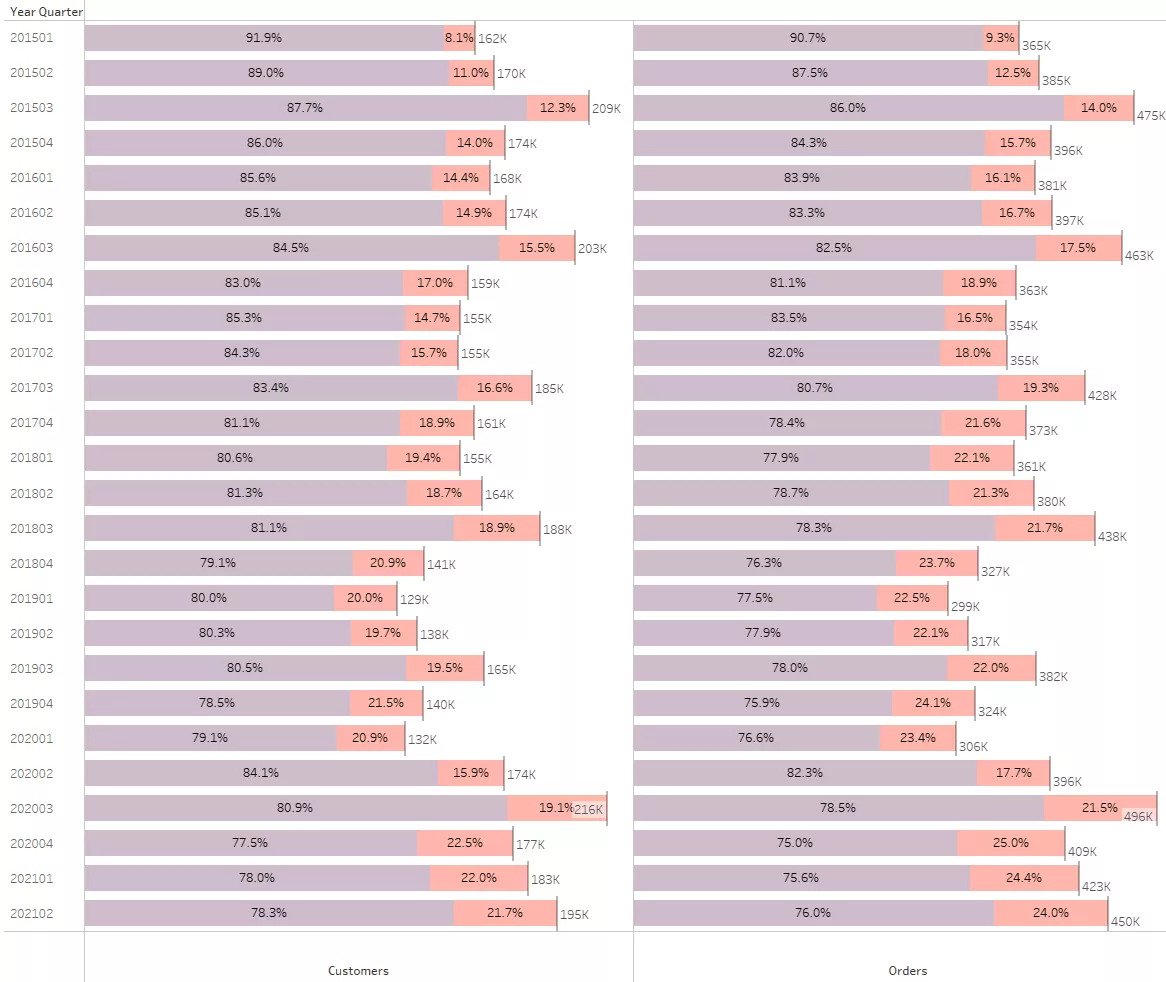
Takeaway:
Two things immediately become apparent here. The general trend indicates an increase in the portion of repeat customers and repeat customer orders as we move from quarter to quarter.
The highest proportion of repeat customers can be seen in the most recent quarters.
This is a great positive indicator for the company. Plotting a time series helps confirm this trend.

Takeaway:
The second important pattern is a regular jump in repeat customer portions during the holiday seasons (Q4). This might be caused by a high influx of customers in Q3 that are coming in the very next Quarter to buy again. Let’s check this.
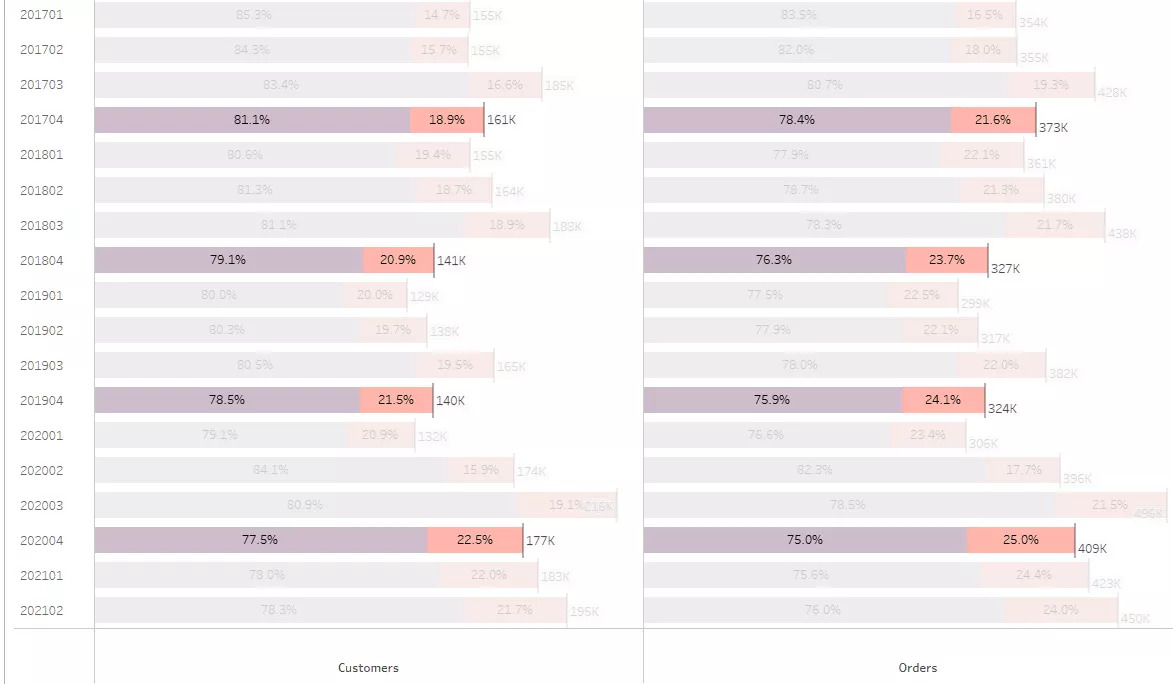
![]()
Here we only look at orders of repeat customers. We break the orders by the age of the repeat customer. A greener shade indicates an older customer. Orange indicates that the customer has made their first purchase within the Current Quarter. 60% of repeat customers buy within the same year.
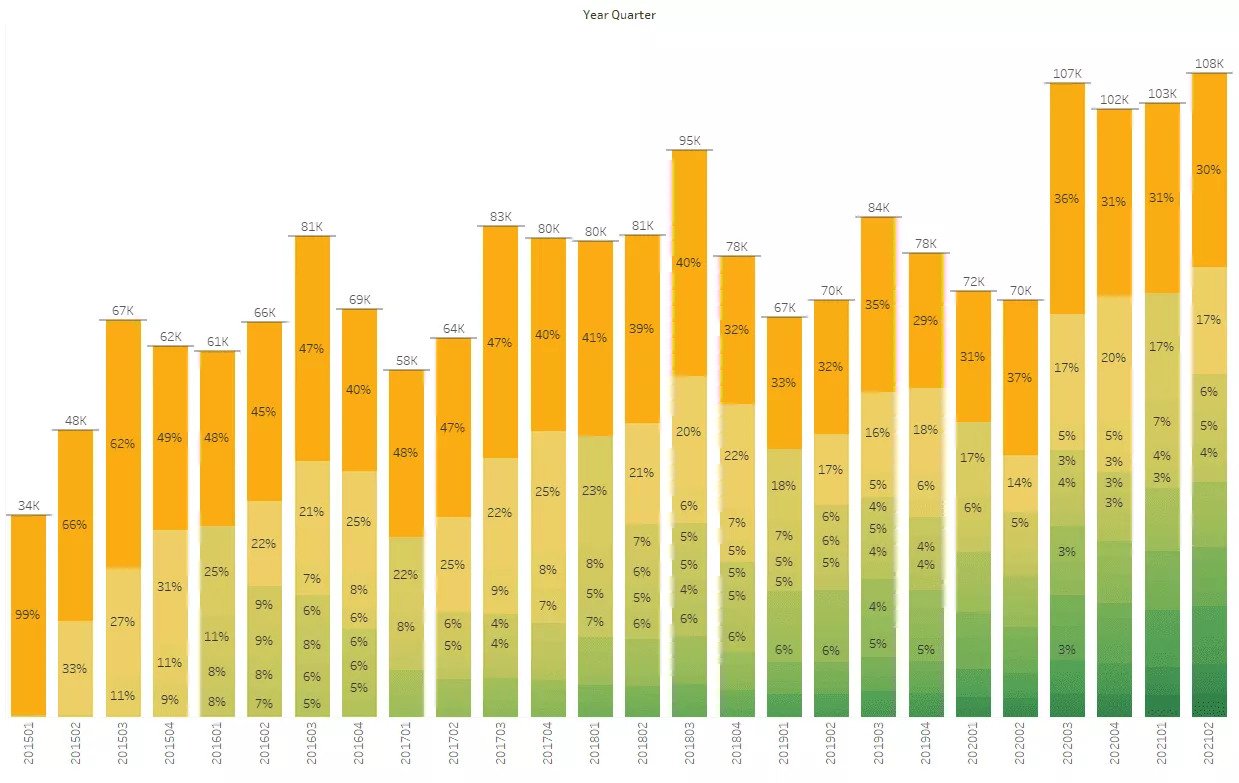
* 2015 is the starting point for the observation period. All first transactions from 2015 are taken as new customer transactions
Takeaway:
As we move along from quarter to quarter, bars get greener. This is another positive indicator for the company. It shows that more and more older customers are coming to purchase again, suggesting strong brand loyalty.
However, this graph doesn’t show the complete picture. Is there any difference in purchasing power of older and newer customers? Let’s assume the company sells two categories of products. Category A is high-value products and Category B is inexpensive products. Now we are left with one important question. What is the quality of these repeat customers? How does their AOV compare against new customers? The nature of the business dictates that consumers will only buy a Category A product every 5 or more years. Therefore, repeat customers will have higher chances of buying Category A as their age increases.
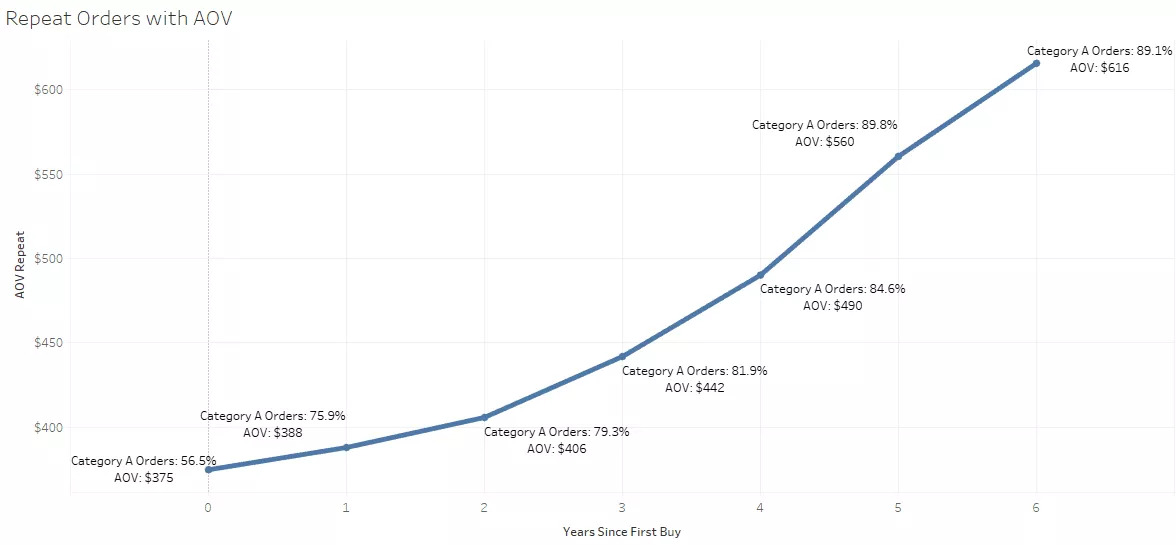
Takeaway:
In this graph, we plot orders of repeat customers by age. For customers that have bought within the same year, only 56% of all Orders are Category A orders. Compare this with customers that are 5 or more years old where almost 90% of all orders are Category A orders. This also correlates with an increase in AOV. Since Category A has a higher AOV, a greater contribution of Category A products to orders increases the general AOV.
This graph shows the AOV of repeat and non-repeat customers by quarter. The darker bar represents AOV for repeat Customers.
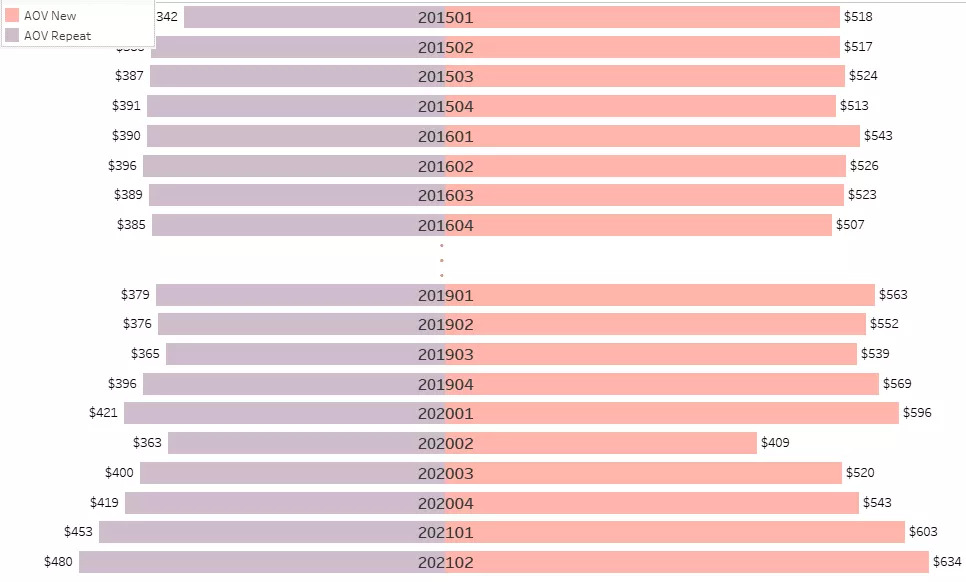
Takeaway:
There is an average difference of about 25%. Repeat customer orders have a lower AOV which is expected. These customers have a lower percentage of Category A sales.
Conclusion
This analysis has uncovered a handful of insights. Growth in repeat customers proves that the actual revenue growth is sustainable. Brand loyalty is becoming stronger as the share of sales for repeat customers is on the rise. Another positive trend is the increase in older repeat customers in recent times. This means older customers are coming back to make high-value purchases.
While performing this sort of analysis to determine the quality of customers, we were able to uncover interesting insights into business growth. However, this sort of analysis opens a new door for further research. The following areas can be further drilled down to gain more value:
- Cost-benefit analysis with marketing budget data for customer acquisition and retention.
- Extracting competitors’ customer metrics can also provide us an edge over them in terms of marketing strategy. This data is becoming readily available through SEC.
- Experiment shows signs of healthy customer growth. The overall customer base is increasing, and this is coupled with an uptick in repeat customer that has not made purchases in the recent past.
By going through this analysis, we were able to definitively prove the quality of repeat customers that a company was producing. We also gauged the trade-off between existing customer retention and new customer acquisition.
In case of any further questions or similar analyses, please reach out to Visionet today. Our team specializes in retail and customer-driven data intelligence as well as business intelligence.




